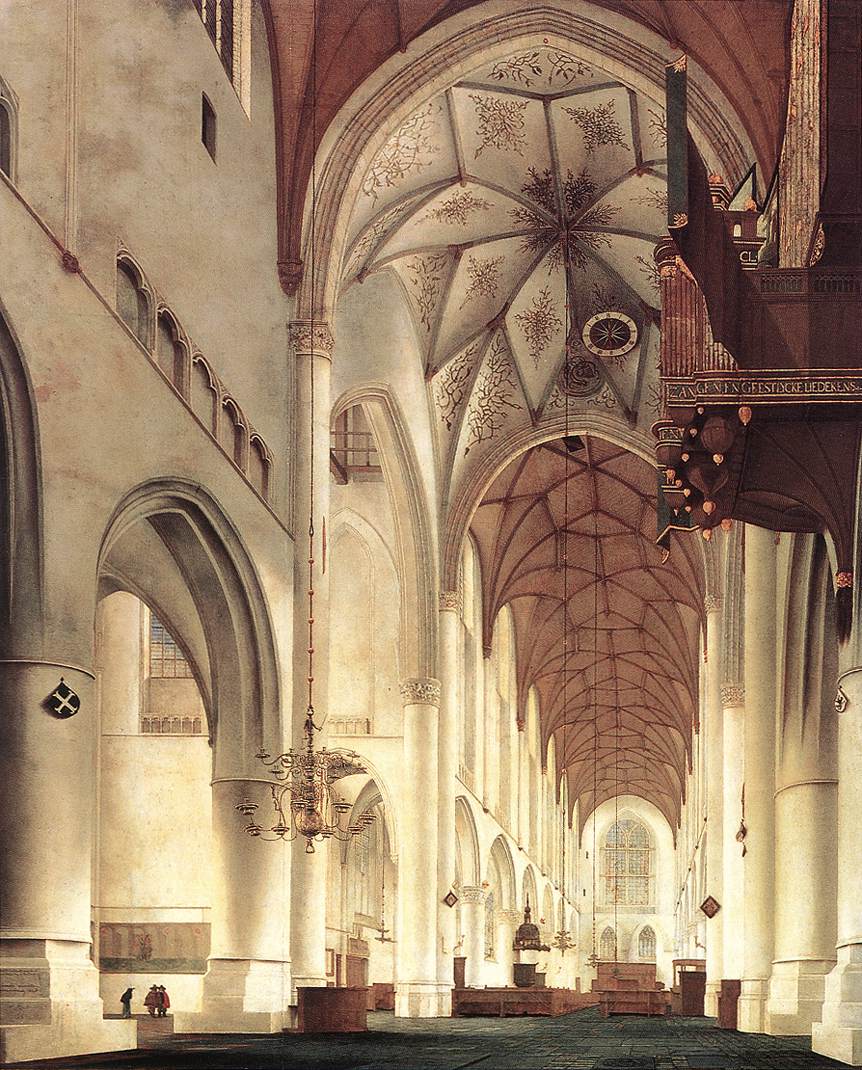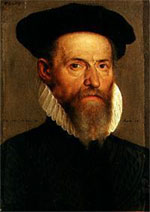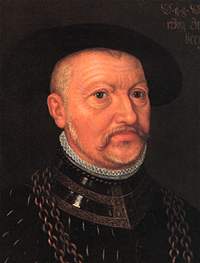 The
Reformation and the State
The
Reformation and the State
I. Discussion: The Peace of Augsburg (1555)
Image: The Diet of Augsburg (1530)
Image: Resolution of the Diet of Augsburg (1555)
Image: Peace of Augsburg (1555)
Image: Charles V, Holy Roman Emperor (r. 1519-1556)
Image: Ferdinand I, Holy Roman Emperor (r. 1556-1564)
Image: Andreas Herrneisen, The Konfessionsbild of Kasendorf (1602)
Image: Johannes Dürr, Konfessionsbild of St. Johannis, Schweinfurt (c. 1630)
II. Church and State in the Early Reformation
A. Luther's “Erastian” Turn
B. Rebuilding the Church
1. The Disposition of Church Property
2. What to Do With the Bishoprics?
3. A Model of Church Governance
Image: Franz von Waldeck (1491-1553), Prince-Bishop of Münster, Osnabrück, and Minden
Image: Heinrich von Sachsen-Lauenburg (1550-1585), Prince-Archbishop of Bremen, Prince-Bishop of Osnabrück and Paderborn
 |
Thomas Erastus (1524-1583) was a Swiss physician, theologian, astrologer, and alchemist. Born Thomas Lüber in the Aargau town of Baden, Erastus studied theology at Basel and medicine at Bologna. At the peak of his career, Erastus served as personal physician to Ottheinrich, Elector Palatine (r. 1556-1559) and as professor of theology at the University of Heidelberg. In his Theses (1568), Erastus argued, among other things, that the sins of Christians should be punished by secular authority, not by the church through the withholding of sacraments. Generalized as "Erastianism," the doctrine amounted to an endorsement of state authority over ecclesiastical affairs. |
|---|
Chart:
The Saxon Model of Church Organization
Chart: The Princes' Reformation,
1525-1546
Map: The Episcopal Sees of Central Europe (ca. 1500)
Map: Ecclesiastical Territories of the Empire, 1600-1800
Map: The Princes' Reformation,
1525-1570
Map: Confessional Divisions
in Europe, ca. 1560
Map: The First Confessional Map of the Empire (1757)
III. The
Quest for Unity
A. The Formation of Confessional Blocs
1. From the “League of Torgau” (1526) to the “League
of Schmalkalden” (1531)
2. A Turning Point: The Diet of Augsburg (1530)
B. The Road to Peace (1530-1555)
1. The “Nuremberg Standstill” (1532) and the
Schmalkaldic War (1546-1547)
2. The “Interm”of 1548 and the Revolt of the Princes (1552)
C An Icy Truce (1555-1620)
1. Accommodations and Strains (1560s-1580s)
2. The War of Cologne (1583) and the Return to Militancy

Duke Ulrich of Württemberg (r. 1498-[1519-1534]-1550)
Image above right: Pieter Jansz. Saenredam
(1596-1665), Interior of the Church of St. Bavo in Haarlem (1648),
Oil on panel, 200 x 140cm, National Gallery of Scotland. Image source: Web Gallery of Art.
